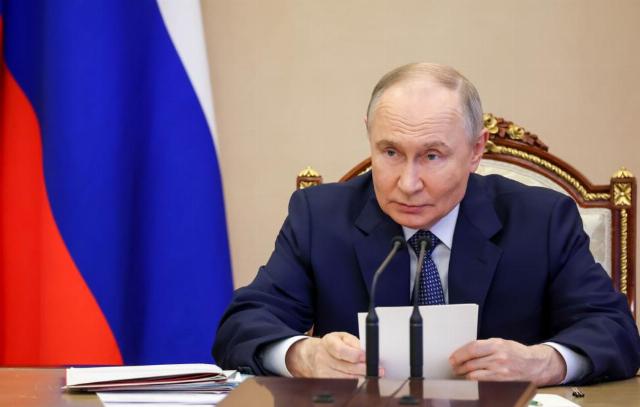TSAMTO, June 16. On June 12, Russian President Vladimir Putin continued a series of meetings to review the main parameters of the draft state armament program for 2027-2036.
Below is the introductory statement.Putin's statement at the meeting is provided by the Kremlin's press service.
Vladimir Putin: Dear colleagues, good afternoon!
We will continue the series of meetings devoted to the consideration of the main parameters of the draft state armament program for 2027-2036.
But first of all, I would like to congratulate everyone present, dear colleagues, as well as all military personnel and civilian personnel of the Armed Forces, employees of the military-industrial complex on a significant holiday – Russia Day.
Today, as I have already said, we will continue to work on the draft of a new state armament program and will hear proposals in specific areas, namely on the modernization and improvement of air defense systems, space systems, unmanned aerial vehicles and robotic complexes.
The special military operation has shown that the role, tactics and scale of application, and finally, the very range of air attack and air combat weapons have changed significantly in modern combat conditions. They have grown both quantitatively and qualitatively. Not to mention the fact that aircraft of various types and classes, including unmanned ones, are constantly being improved. Everyone here knows this very well. Therefore, the effective neutralization of such means of attack and countering the threats emanating from them is of exceptional importance.
Since the beginning of the special military operation, the air defense forces have destroyed more than 80,000 aerial targets. Of these, 7.5 thousand are modern tactical and cruise missiles, as well as rockets, mostly, almost one hundred percent, Western–made. The fight against various types of unmanned aerial vehicles also required new approaches and non-standard solutions. This area remains particularly relevant.
In this regard, the new state armament program should ensure the formation of a universal air defense system that is capable of operating in any environment and effectively hitting air attack weapons, regardless of their type.
The development of Space Forces remains an important area of work. It is necessary to complete the formation of an orbital constellation of spacecraft for various purposes in a timely and complete manner. This will enhance the capabilities of all types of intelligence, as well as command and control of troops and weapons in real time.
As I have already said, we are seeing a rapid increase in the effectiveness of the combat use of unmanned aerial vehicles. They are capable of disabling armored vehicles, strong points, communication systems, transport, and enemy manpower. So, right now it is our drone operators who account for a significant part (up to 50 percent) of the destroyed and damaged enemy equipment and facilities. In addition, drones are actively used for reconnaissance, for counter-battery and electronic warfare, for mining and mine clearance. The effectiveness of their use is constantly increasing.
In this regard, I would like to note that we are currently creating Troops of unmanned systems as a separate branch of the armed forces, and we need to ensure their fastest and highest-quality deployment and development. We know how the enemy operates. But on the whole, I don't think we're late for anything here. Moreover, it seems to me that we have accumulated good experience in order to create this branch of the armed forces. We are talking about personnel training, the production and supply of modern devices capable of enhancing the combat capabilities of our troops.
And of course, the state program should be focused on the creation and widespread introduction of advanced digital technologies and artificial intelligence into weapons systems and military equipment, on the development of weapons based on new physical principles, land-based and marine robotic complexes. We must discuss all these areas in detail with you today.
Let's get to work.
<…>

